-
play_arrow
CRUSADE Channel Previews CRUSADE Preview-Call 844-527-8723 To Subscribe
[vc_row][vc_column][vc_column_text]
Christopher Laurence Examines Artist Spotlight: Baritus Catholic Illustration
Hey, do you like cool stickers? Don’t answer that; of course you do. What about slick t-shirts, especially if they feature Catholic imagery? Again, this is rhetorical. “But, Christopher,” I can hear you about to say, “these things don’t exist! Catholic products are either ugly or corny or cheap Chinese-made crap.” Ah ha! Normally, formerly, sure. Enter Chris Lewis, aka Baritus Illustration. Lewis takes pillars of Christendom and gives them a modern (not modernist!) shine, and forms them into stickers, art prints, t-shirts, battle flags and more. All quality Catholic imagery, no cringe. I had the pleasure of interviewing Chris Lewis about his work, his Faith, and more.
Christopher Laurence: Can you tell us about your life in the Faith? Are you a cradle Catholic? A convert? A revert?
Chris Lewis (Baritus): I was raised in a nominally fundamentalist Christian family. While my grandparents were strong examples in the faith, our house was very on and off in our living out any kind of particular faith. We wouldn’t have called ourselves Protestant, or even known the term fundamentalist, but this was our approach to the Christian life. We said a simple prayer of initiation into Christianity, and the Bible was the sole authority, based on our own interpretations. We moved around a lot so attended many different churches growing up, eventually landing in Non-Denominational churches. By this time I had started to question some of the principles of our beliefs and the nature and origin of the Bible. Adequate answers were never provided so by the time I was in my teens I rejected Christianity, or at least what I thought was Christianity and lived pretty antagonistic towards Christians until I met my wife. I had never known anything of Catholicism, and if I ever had friends that were Catholic growing up they certainly never shared their faith. Catholicism was compartmentalized in my mind along with groups like Mormons or Jehovahs witnesses, so when I found out my wife was Catholic, it was very curious to me. I started attending Mass with her weekly and eventually converted before we married though a true conversion of the intellect and spirit would take years to sink in. Eventually beginning to ask simple questions like “who was the first Pope”, or how did Sunday worship develop and what did early Christianity look like led to an insatiable desire to learn the faith and live it as I become absolutely convinced of the Church’s claims and authority.
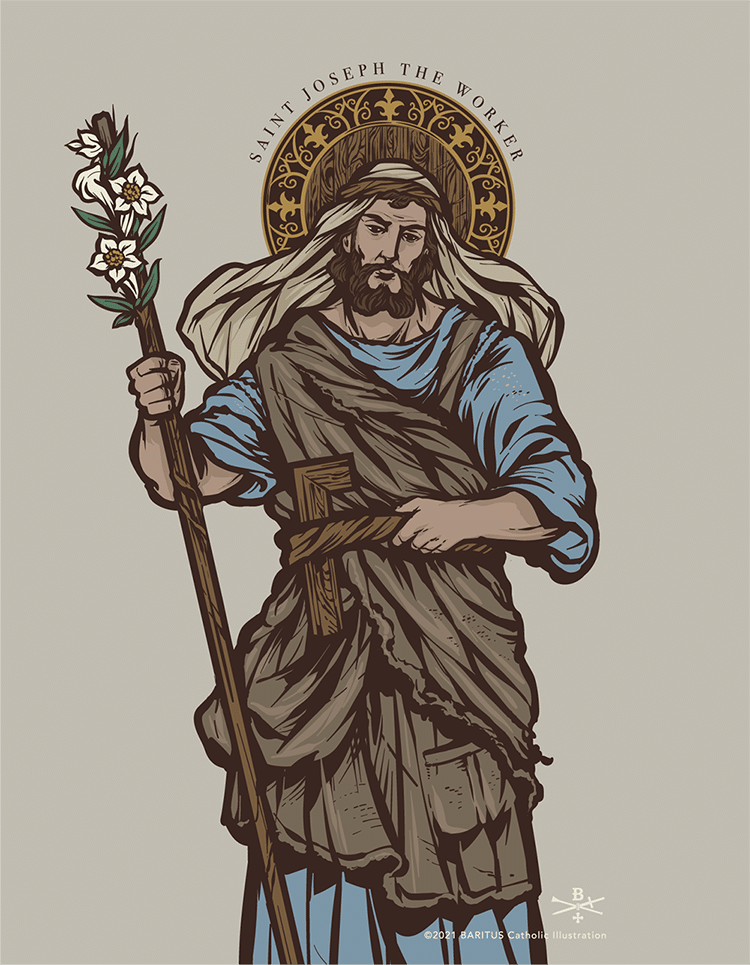
Christopher Laurence: When did you first become interested in art? Are you trained in the arts or self-taught?
Chris Lewis (Baritus): Art was probably the earliest thing I gravitated to naturally and I had been drawing my entire life. For years I taught myself basic illustration just through practice and studying artists I admired. Eventually as computers became more common and things like Photoshop were introduced to the art world, I taught myself digital art.
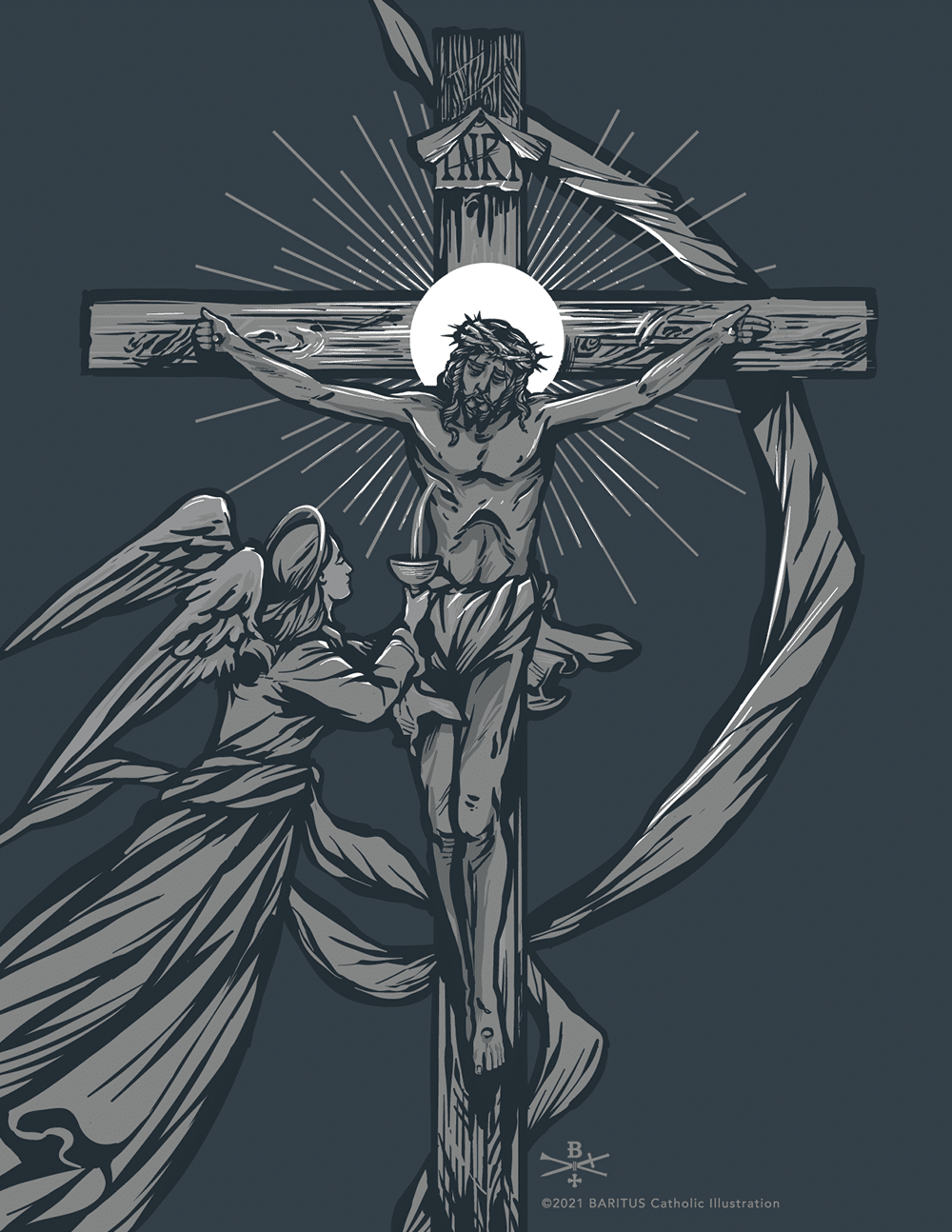
Christopher Laurence: At what point did you start to pursue art seriously and what motivated you to do so?
Chris Lewis (Baritus): While I was able to pick up clients doing freelance with my self-taught skills for many years, I found that getting my foot in the door for a reliable career was nearly impossible without an education. Because of this I eventually went back to school but instead of studying illustration I went into graphic design which seemed like a more stable way to make a living and eventually landed in marketing doing secular corporate graphic design work for 17 years. Unfortunately during this time, I really set illustration aside, and fell out of practice with the art I really loved doing.

Christopher Laurence: Was your art always directed towards displaying the Catholic Faith or had you ever worked with secular subjects?
Chris Lewis (Baritus): It was not, I’ve spent most of my professional life doing secular work. Even in the rare occasions I would do freelance illustration outside of graphic design, clients were always secular. I did a lot of work in product and brand development, and in various music scenes doing graphics for promotion or designing logos for the occasional client.
Christopher Laurence: If you made a change from secular to religious subject matter, what prompted it?
Chris Lewis (Baritus): The opportunity to do Catholic work never presented itself and honestly didn’t even come to mind much until after I had a deep spiritual conversion years into my life as a Catholic. As this happened and I began drawing again for some of my corporate work, I one day took a break from a project I was working on and began doodling in the sideline of my design. The first thing that came to me, due to the fact that I had growing much deeper in my love for the faith, was the Sacred Heart. It reminded me how much I loved to draw, and this motivation to illustrate Catholic themes really inspired me to pick up the habit of drawing daily and I began drawing frequently after coming home from work at night. I started to explore various Catholic subjects and in a matter of a couple months had built up a small portfolio of Catholic work which encouraged me to keep at it.
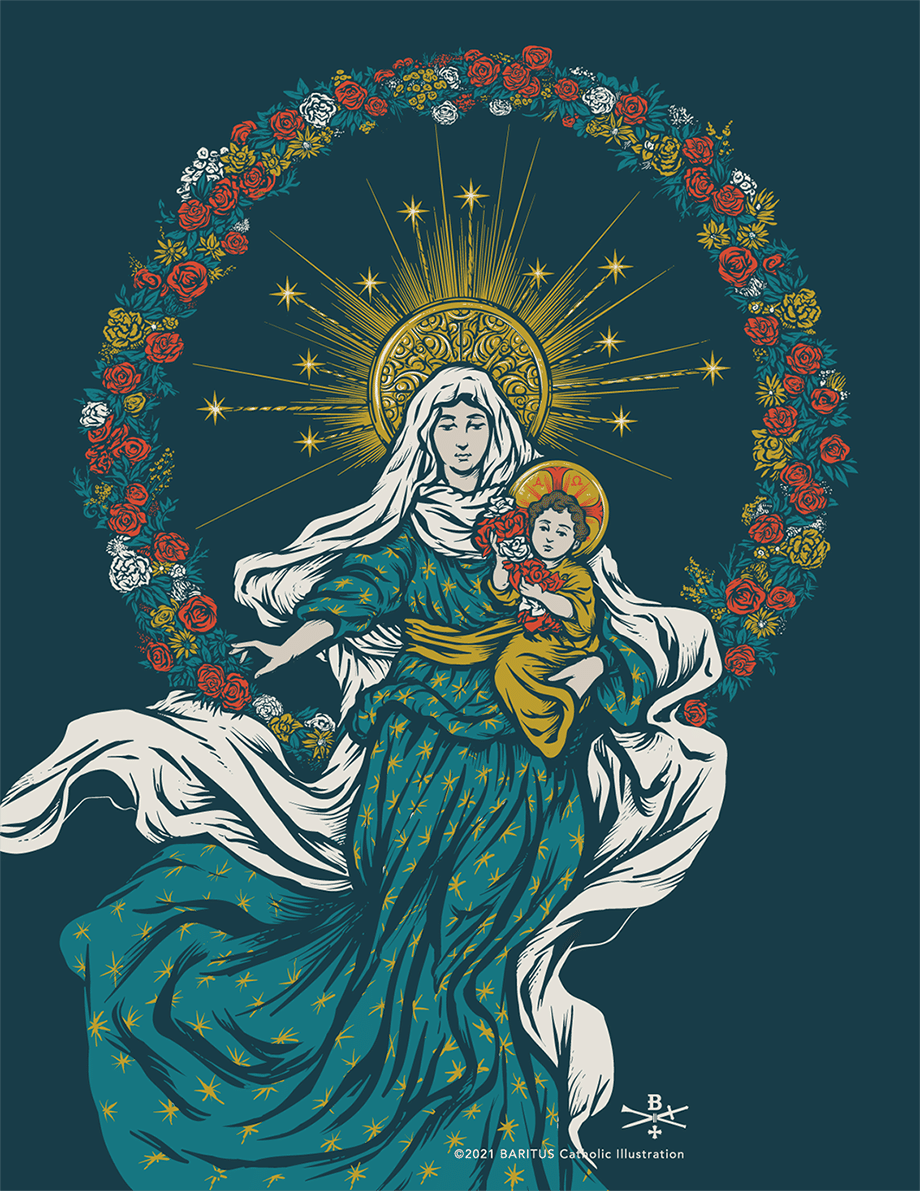
Christopher Laurence: How did your style evolve? Were any other artists or works a significant influence on you?
Chris Lewis (Baritus): It was really just a natural progression that occurred from experimenting with various types of art that I loved from the past such as etchings and woodcut illustration, or even statuary. I collected anything I could find by artists like Gustave Doré and Arthur Rackham over the years (19th century illustration being some of my personal favorite), and they probably had the biggest influence on me. I never wanted to just copy styles though, so I began experimenting on my own with different methods of drawing and eventually came to something like a merging of everything I loved to try to develop something unique, but also natural. I didn’t want to force something or simply replicate what I saw. I wanted to find a way of drawing that flowed from the pen without thought.

Christopher Laurence: Who is your art for and what do you hope your preferred audience gets from it?
Chris Lewis (Baritus): I’ve always had somewhat of a fascination with street art, and graffiti, or guerrilla art, and you find a ton of this if you walk through enough modern cities. But what always struck me was the shallowness, or emptiness of these works, and even the depravity of it. Yet it seems to have a grip on the culture and young people. I couldn’t really put my finger on anything that directly contrasted this from the religious art work. There was nothing out there for people who wanted to claim public space by showing off their faith through art, in a way that was relevant today. It got me interested in doing work that could be used to help inspire and motivate the Catholic faithful, and give them a means of displaying Catholicism in a way that was true to the faith, but had a modern aesthetic that was just as engaging as anything the secular world was attracted to. I’ve always seen art as a non-confrontational way to evangelize, or get people curious. Being that I was now making digital art, it seemed like a logical move to begin creating products that could speak to the public in.way that attracted young people, and hopefully do my small part to contrast anything that street art was communicating to the public. But I also wanted Catholics to have a place to go to find authentic, strong Catholic imagery, and so in that way it’s for more than just young people, but anyone searching for depictions of our Catholic heritage from possibly a different angle that they are unfamiliar with.

Christopher Laurence: Do you think art is an effective means of evangelization?
Chris Lewis (Baritus): Definitely, as mentioned previously, art is a non-confrontational way to engage people. When you encounter a work of art that strikes you and communicates something profound, you can not argue with it. It is either true or it’s not. For a Catholic world which has seen many of it’s churches modernized and gutted of any kind of aesthetic beauty, and for a demographic shrinking rapidly and never stepping foot in churches at all, creating art that is inspired by traditional imagery from the past, is a way of bringing the church to the world outside. Hopefully in time, it could help encourage more people to return to stepping into the church, and I think once we’ve regained a love for Catholic art and beauty, the faithful will demand it in our churches again. But it’s also a way of speaking to those outside of the Catholic world, or sparking an interest in what Catholicism has to offer. Many, as I was growing up, are entirely unfamiliar with our faith. Just as the stained glass windows were once used to educate the faithful, Catholic art today can be used to educate or introduce a growing secular world to the Truth, Beauty, and Goodness within our ancient faith.
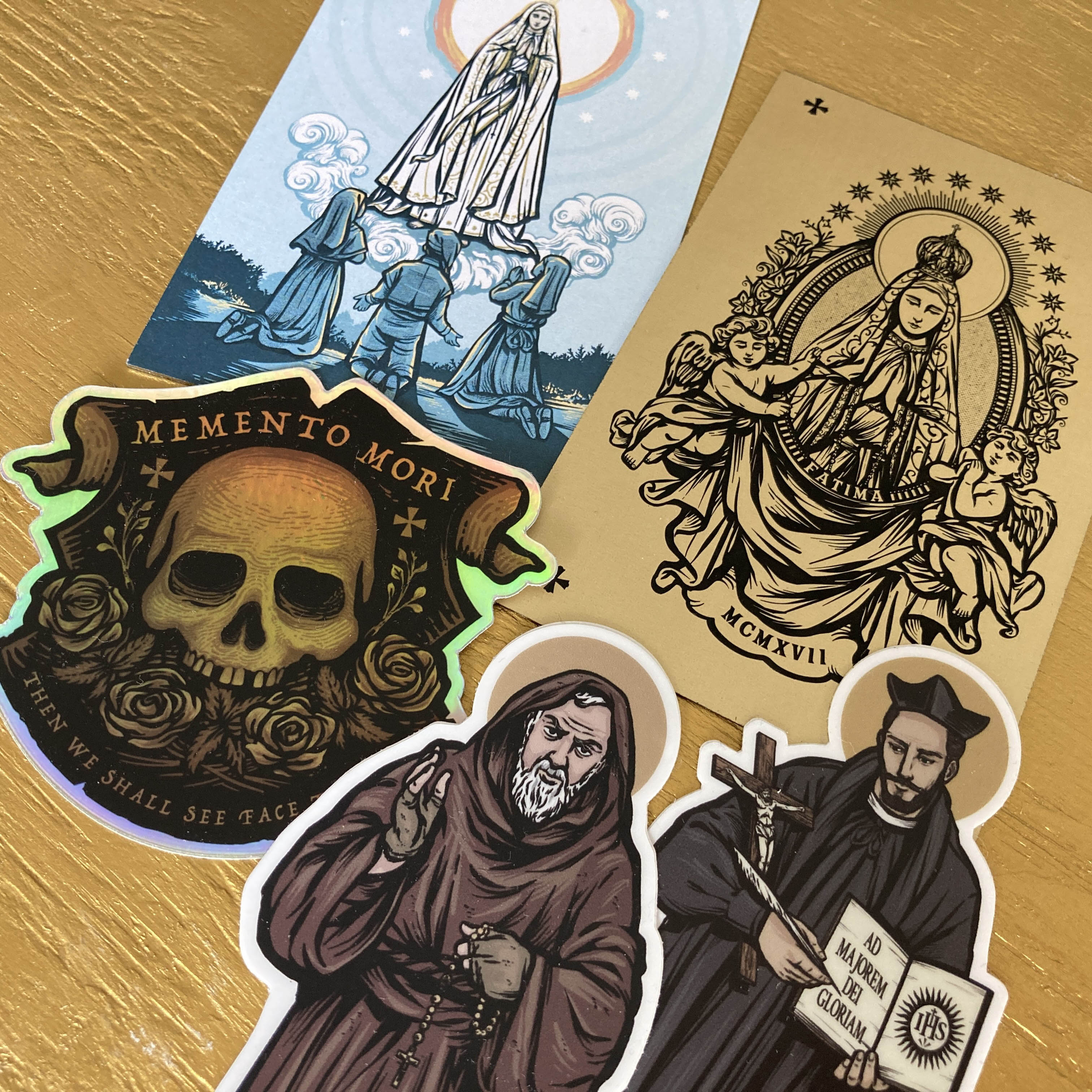
Christopher Laurence: Why do you think we see such a dearth of Catholics working in the arts and popular media? How can we remedy this? Can it even be remedied?
Chris Lewis (Baritus): Relating to my previous answer, I believe it’s because we as a Church have not cultivated it. We’ve gotten comfortable, or lukewarm to entering churches with barren walls or with a stripped down modern aesthetic. Catechesis in the faith is in somewhat of a crisis as well, and when the faithful don’t know their faith well enough, they will not have the desire to share it or represent it, or even ask the question “what role should art play in my faith life, and are we lacking?” The art of the Renaissance was really inspired by the momentum of the Church to reinvest in educating and motivating the faithful. We need that now badly as well, and it seems that the middle road of lukewarmness is slowly disappearing as people are falling away from their faith entirely, or the few are growing deeper in it. As we see those growing in their faith hopefully want to preserve our legacy and reinvigorate it, we’ll hopefully also see a demand for art to return to our parishes and devotional lives.
Christopher Laurence: What do you believe the purpose of art is? What are the proper ends for a piece of art created by a Catholic?
Chris Lewis (Baritus): Simply to communicate the Transcendentals. We inherit from our Creator, the instinct and inspiration to create. The more we know Truth, Goodness and Beauty, the aspects of God Himself, the more we will want to share that, and create works of art that lead to flourishing. Art is also a way to build culture, and bind people together by a common belief and faith. As society has grown more secular, we see people fragmenting, and using art as a means of distorting what was once common for the purpose of glorifying individuality over our shared identity as children of God. When we spoke the same Christian language as a culture, we created works of art that reflected that reality. It should be no surprise the the opposite is true today and now that those common beliefs are becoming uncommon, art is being used as a way to mocking those things, and lacks truth, goodness and beauty. This is art being abused. As Catholics it’s important I think to remember these transcendentals are what art is really meant to communicate, and we need to be the ones leading the movement to reclaim art’a true purpose.
Christopher Laurence: Do you believe art created by Catholics should always be explicitly Catholic? What are the reasons you choose to be explicit and overt with your Catholic imagery?
Chris Lewis (Baritus): Not necessarily. It’s possible to create works of art that are Good, True, or Beautiful, without being explicitly Catholic. A painting of a sunset, or a field of flowers can communicate aspects of Beauty and so on. My personal motivation however is in creating works of art that are explicit for the simple fact that I never knew about these things in my youth. Catholicism was foreign to me, and once I found it I couldn’t believe that I had lived without ever knowing these things. It was the best thing that ever happened to me and gave me a foundation for everything in life. I want to share this experience with others who may be searching, but don’t know what they are searching for. I wanted my art to boldly put on display the reality of the Catholic faith in all of it’s various aspects, quite literally to people who may never have been exposed to it.
Christopher Laurence: What do you hope to see accomplished by/through your art in the next 10 years?
Chris Lewis (Baritus): I really try to stay focused on the moment and creating works that are authentic, and true. I believe that if I stay focused on that, the fruits will come on their own, and I don’t even need to necessarily be aware of them. If people are edified, encouraged, embolden in their faith, this work is fruitful. If the it helps people outside of the faith become curious about the faith, again the work is fruitful. I try to plant seeds using the talents God gave me, and let Him give the increase.
Christopher Laurence: Is it possible for Catholics to regain a foothold in the arts and popular media, and if so, how do you see this being brought about?
Chris Lewis (Baritus): I think the biggest thing Catholics can remember to do is speak proudly and boldly, and most of all truthfully about the Faith. If we do that, and if we are not afraid of sharing Faith without compromise, those who are seeking Truth will be drawn to it, and willing to defend it as well. This in turn will inspire us as a Church to again build up a truly authentic Catholic culture which in turn will naturally produce the arts and beauty that it once did. Knowing the faith, and expressing the faith go hand in hand.
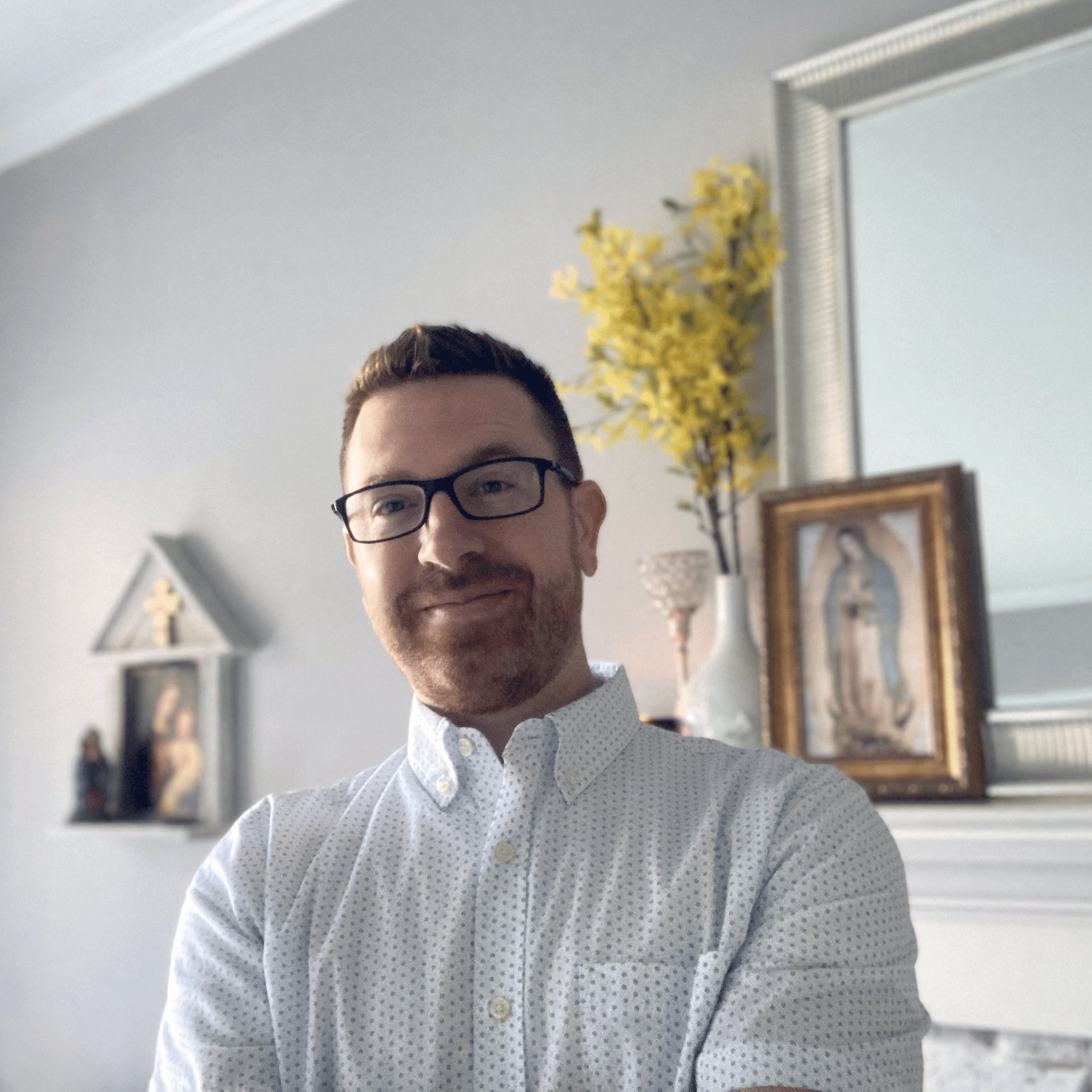 Chris Lewis is the illustrator behind BARITUS Catholic Illustration, a project devoted to creating works of art that are inspired by the rich artistic legacy of the Catholic Church and promote the good, the true, and the beautiful in a way that resonates with the faithful today.
Chris Lewis is the illustrator behind BARITUS Catholic Illustration, a project devoted to creating works of art that are inspired by the rich artistic legacy of the Catholic Church and promote the good, the true, and the beautiful in a way that resonates with the faithful today.
Our Readers And Listeners Keep Us In Print & On The Air!
Click here to subscribe to The CRUSADE Channel’s Founders Pass Member Service & Gain 24/7 Access to Our Premium, New Talk Radio Service. www.crusadechannel.com/go
What Is The Crusade Channel?
The CRUSADE Channel, The Last LIVE! Radio Station Standing begins our LIVE programming with our all original CRUSADE Channel News hosted by Ron Staffard. Coupled with Mike “The King Dude” Church entertaining you during your morning drive and Rick Barrett giving you the news of the day and the narrative that will follow during your lunch break!
We’ve interviewed over 300 guests, seen Brother Andre Marie notch his 200th broadcast of Reconquest; The Mike Church Show over 1200 episodes; launched an original LIVE! News Service; written and produced 4 Feature Length original dramas including The Last Confession of Sherlock Holmes and set sail on the coolest radio product ever, the 5 Minute Mysteries series! We were the ONLY RADIO outlet to cover the Impeachment Trials of President Trump from gavel to gavel!
Now that you have discovered The Crusade, get30 days for FREE of our premium News-Talk Radio service just head to:
https://crusadechannel.com OR download our FREE app: https://apps.appmachine.com/theveritasradionetworkappIti-
Did you know about Baritus Catholic Illustration? If you are interested in supporting small business, be sure to check out the official store of the Crusade Channel, the Founders Tradin Post! Not to mention our amazing collection of DVD’s, Cigars, T-Shirts, bumper stickers and other unique selection of items selected by Mike Church!
[/vc_column_text][/vc_column][/vc_row]
Written by: Christopher L
Similar posts
SEARCH
ON AIR

The Mike Church Show-LIVE!
WEEKDAYS 11:00 AM-2:00 PM
The longest running radio talk-show in the history of satellite radio. Mike Church offers no-holds barred commentary on the moral & political decay of the modern world but unlike all other hosts, Mike offers solutions!
close-
Recent Posts
RECENT PODCASTS
TRENDING
Copyright BlackHat Studios 2026 dba The CRUSADE Channel, All Rights Reserved



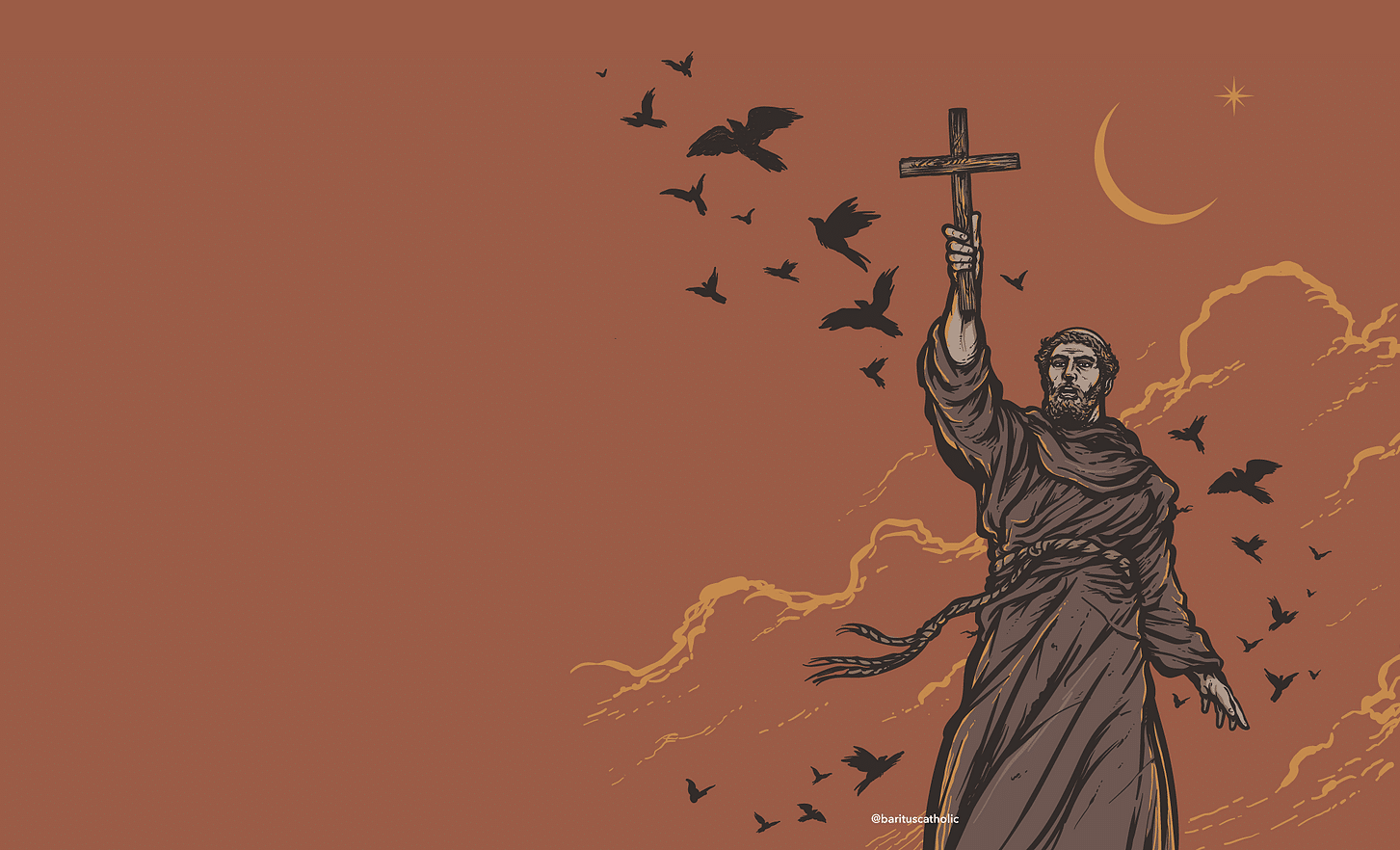









Post comments (0)